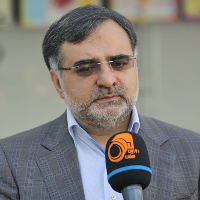Triangular Assessment of the Etiology of Induced Abortion in Iran (A Qualitative Study)
Author(s):
Abstract:
Background
About 46 million induced abortions occur in the world annually. The studies have reported 80 000 cases of induced abortions in Iran annually..Objectives
This qualitative study was conducted to identify the causes of unsafe abortion in Iran from the standpoint of three groups of experts, women with a history of abortion or unwanted pregnancy and service providers..Patients and Methods
A total of 72 in-depth semi structured interviews were conducted in 2012 in Tehran and Shahroud. After coordination with 8 experts, sampling from them was done using the Snowballing method in their offices. Sampling from 28 married and 10 engaged women with a history of unwanted pregnancy or unsafe abortion and 12 providers was done in health care centers and a in number of gynecologists’ and midwives’ offices. Sampling from women with a history of unwanted pregnancy or unsafe abortion such as single women, HIV positive women and drug users, and women who had sexual intercourse for money was started by referring to the social rehabilitation center for women and continued using the snowballing method due to difficulties in accessing them. Participants were from different ethnic groups including Fars, Gilaks, Mazandarani, Arab, Azerbaijani, and Lor. Content analysis was performed on collected data..Results
Based on the results of the interviews, participants have abortion for following reasons: 1. Wanted pregnancy (sub categories: fetal abnormalities, Concern about fetal health and lack of trust to prenatal diagnostic methods, Fetal sex, Lack of independent and free decision making regarding pregnancy in women, 2. Unwanted pregnancy (sub-categories: Socio-economic factors, Beliefs and feelings, Lack of information about family planning) 3. Predisposing factors (sub-categories: Lack of information on religious aspects of abortion, Easy access to easy abortion methods). Some people, despite having unwanted pregnancy due to social, economic, cultural and family grounds, continued their pregnancy and did not have an abortion for the following reasons: Religious beliefs, Beliefs (fear of punishment in the afterlife and believing in fate), Attachment to the unborn baby, Influence of the other people’s opinions (physician, mother or spouse) Late diagnosis of pregnancy, Unsuccessful abortion attempts (Self-treatment, Unsuccessful medical abortion), Economic weakness and arbitrary treatment..Conclusions
In the present study, women who continued their pregnancy despite being unwanted were also interviewed. Although they had the same social, economic, cultural, and family problems as women with a history of unsafe abortion and had easy access to abortion, analysis showed that the difference in religious beliefs between the two groups was the most important factor that led women to choose two different approaches. The authors believe that in-depth analysis of people’s beliefs and opinions in this regard and correction of false beliefs plays a crucial role in decreasing the rate of unsafe abortion..Keywords:
Language:
English
Published:
Iranian Red Crescent Medical Journal, Volume:15 Issue: 11, Nov 2013
Page:
9442
magiran.com/p1197118
دانلود و مطالعه متن این مقاله با یکی از روشهای زیر امکان پذیر است:
اشتراک شخصی
با عضویت و پرداخت آنلاین حق اشتراک یکساله به مبلغ 1,390,000ريال میتوانید 70 عنوان مطلب دانلود کنید!
اشتراک سازمانی
به کتابخانه دانشگاه یا محل کار خود پیشنهاد کنید تا اشتراک سازمانی این پایگاه را برای دسترسی نامحدود همه کاربران به متن مطالب تهیه نمایند!
توجه!
- حق عضویت دریافتی صرف حمایت از نشریات عضو و نگهداری، تکمیل و توسعه مگیران میشود.
- پرداخت حق اشتراک و دانلود مقالات اجازه بازنشر آن در سایر رسانههای چاپی و دیجیتال را به کاربر نمیدهد.
In order to view content subscription is required
Personal subscription
Subscribe magiran.com for 70 € euros via PayPal and download 70 articles during a year.
Organization subscription
Please contact us to subscribe your university or library for unlimited access!


